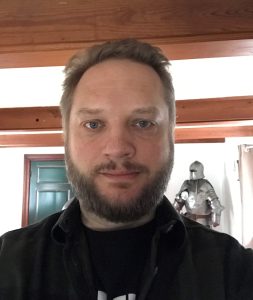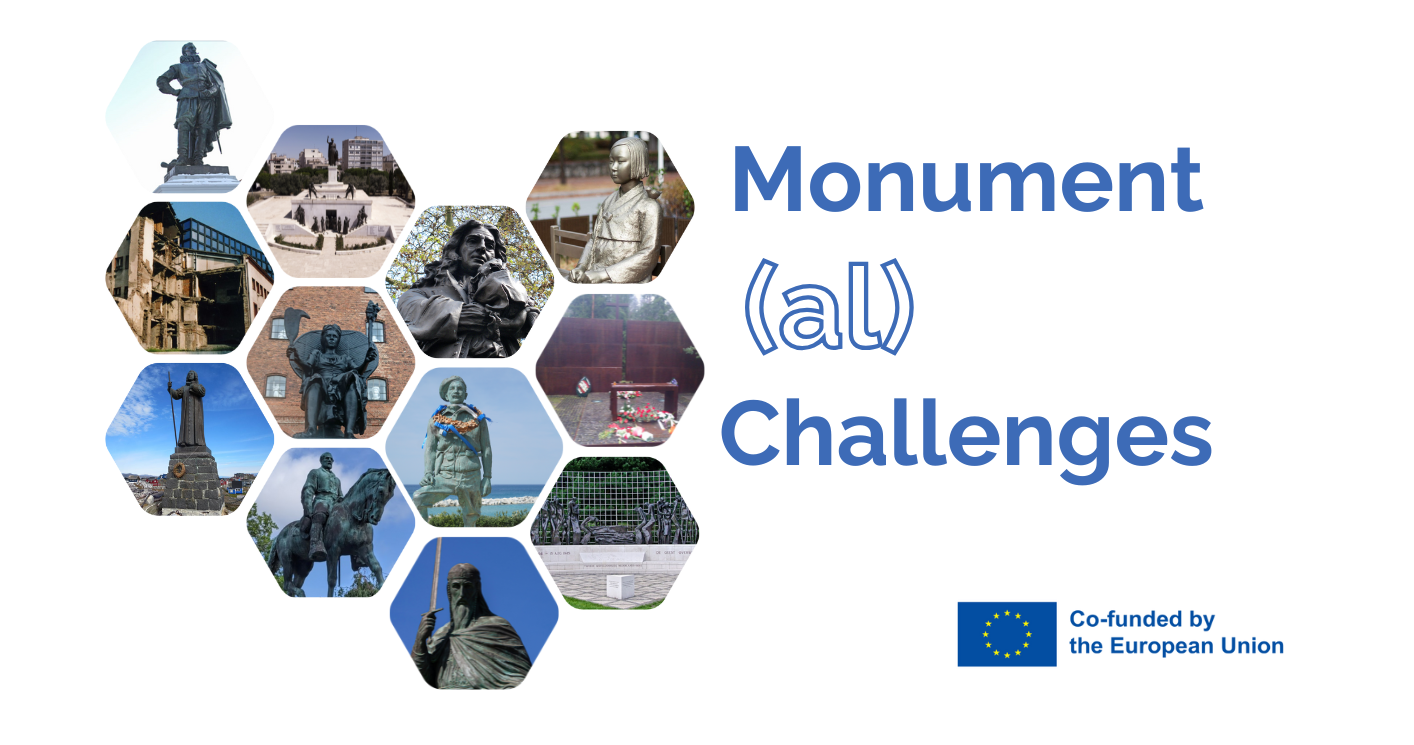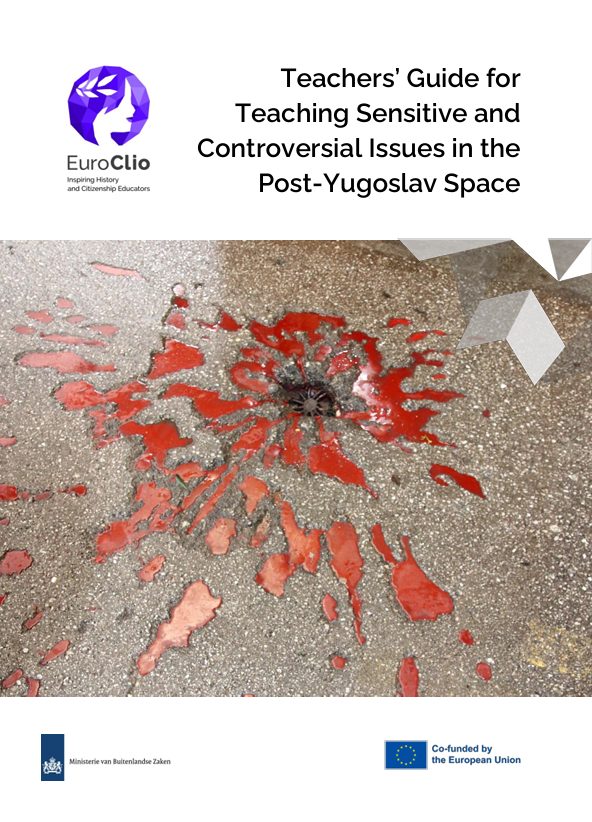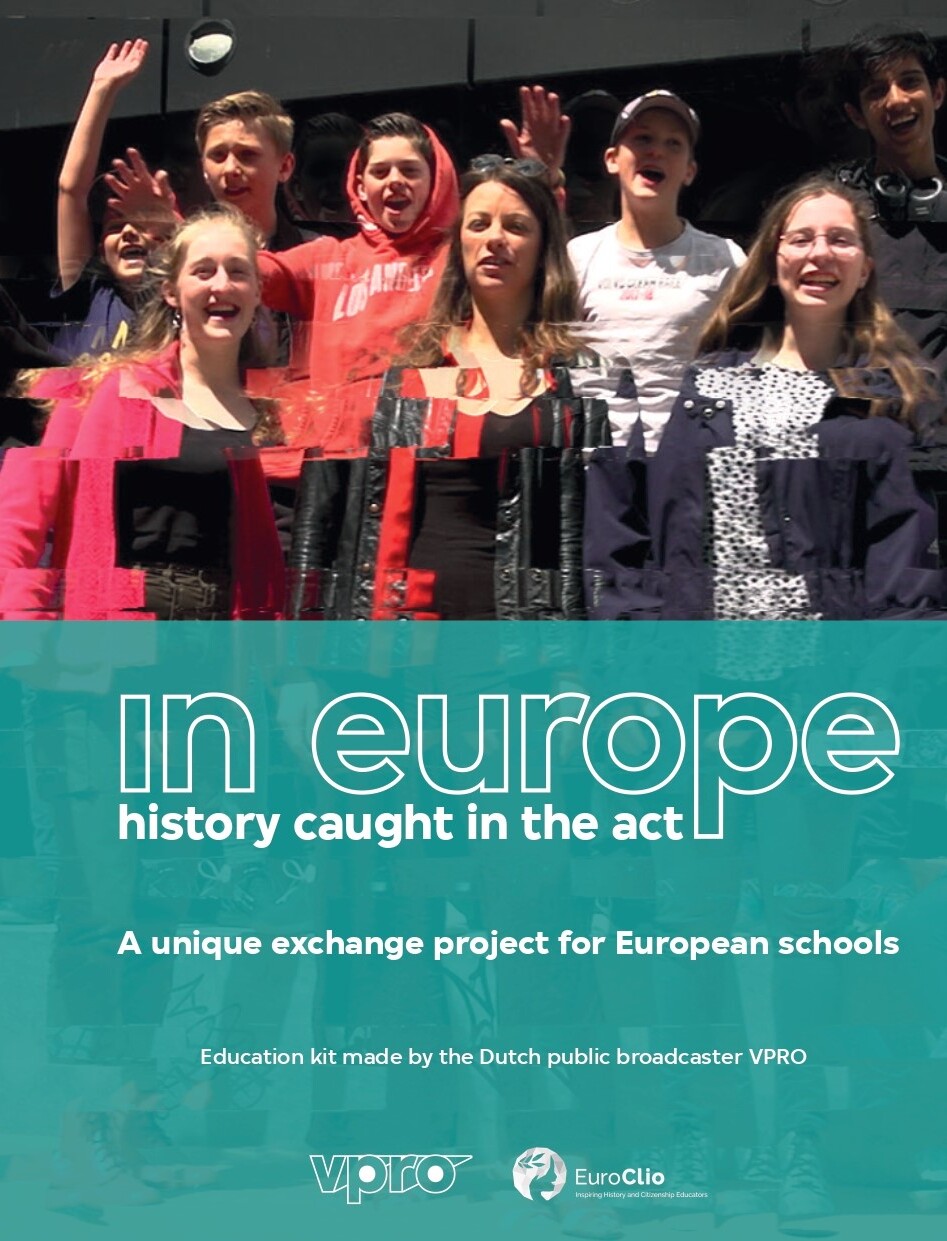 This Teaching Practice was created by Thomas Thomsen.
This Teaching Practice was created by Thomas Thomsen.
Thomas studied history and religion at Aarhus University, Denmark. He also holds an International Honours Degree in teaching and currently works at the University College Absalon teaching history, religion, philosophy, politics and is active in the field of teacher education. Thomas is based in the city of Vordingborg, Denmark.
THOMAS’S INSPIRATION
This practice was designed for teacher trainees in the hope that they could create their own lesson plans based upon this. The aim was to offer a solid base and further structures allowing them to build upon an existing framework, as well as save time. Finding sources in particular can be – as many history teachers well know – extremely time-consuming. For this reason, a pre-selection of good sources and trustworthy research platforms are essential elements of this teaching practice. In this regard, it is not only a useful teaching practice for teacher trainees, but also for established and busy history teachers.
INTRODUCING THE TEACHING PRACTICE:
In the “Letters from the Past” assignment, the students will face different perspectives of past events in Africa. There is a specific historical situation at the core of the task that serves as its foundation. Students are then presented with two very different perspectives of the same situation. This situation revolves around two very different perspectives and requires two groups of students respectively.
Thomas took the context of the First World War, as experienced on the continent of Africa and thoroughly prepared two example perspectives of that time.
The historical situation introduces the following perspectives: Firstly, the view of an Egyptian soldier in the British army, fighting the Ottoman empire in the name of Britain during WWI. This soldier has mixed feelings of loyalty, since the Ottoman Sultan is also his Caliph. On the other hand, this historic situation is contrasted with the perspective of a British officer in charge of a group of African soldiers. This officer is concerned about the loyalty of the troops. Both characters write a letter to their families, expressing their concerns, feelings and experiences.
Writing this letter is the task at hand for the groups of students.
The principal assignment of drafting a letter from the point of view of a different individual is subdivided in multiple tasks that include research, recognizing, constructing a narrative and allowing for multiperspectivity. Furthermore, these tasks build upon each other in a logical order. The process of writing this letter teaches students how to look at the same conflict or historical matter but from different perspectives, in this case from a European/coloniser and an African perspective. This engages students at a different level and helps them to deal with the complexity of dilemmas that real life individuals in these situations face. This also creates awareness of the very different narratives and perceptions that can emerge from the same basis/set of facts.In terms of didactical approach, this confrontation with two seemingly opposite and yet shared perspectives enables students to have a deeper look into historical experiences. Here, the value lies in the resulting assumptions that these perspectives change depending on context, that there can be different groups within a country or even within larger groups, leading to a firmer understanding of what historical narratives are and how they can be recognized.
APPLYING THIS TEACHING PRACTICE:
- Target age group: 13/14 years and up.
- Prerequisites for this activity:
- A certain degree of cognitive consciousness and skills e.g the ability to “stand in someone else’s shoes” is required for this assignment. Therefore this activity is not suited for younger students.
- Pupils need to have at least some understanding that history is a constructed narrative: That it is based on historical evidence, which we then use as the basis for interpretations and build narratives of these interpretations.
- Format: 2 – 3 students per group. Different groups with the same perspective can ask each other questions on the research process and later share their letters to do a kind of peer review.
- Duration: 4 – 5 class lessons. (1 lesson is considered 45 minutes.)
- Research (1 lesson)
- Writing the letter (1 lesson).
- Peer review each other (optional, 1 lesson).
- Sharing the letter (1 lesson).
- Discussion, conclusions, connections to the present (1 lesson).
- Teacher preparation:
- 1 – 2 hours, if using the premade examples. (Egypt and Kenya)
- 4 – 5 hours, if implementing a new historical context.
- Application and adaptation:
- This practice is well suited to different historical settings and contexts. This requires a substantial amount of preparational work however, mainly collecting the pre-selection of sources. Teachers should identify about 5-10 sources in total for a new assignment context.
- The practice can also be used in an interdisciplinary manner, by linking it to other subjects. For example, Thomas got together with a geography teacher to do joint or alternating lessons.
- Doable online as well as in person.
- Per historical situation, you may decide to have at least two but potentially more perspectives.
Teachers may want to provide students to sets of sources or introduce them to certain databases/platforms, such as archives. By doing so, students are more supported in their research and are less likely to get overwhelmed easily. However, this guideline is only designed as a stepping stone for learning to independently research.
USEFUL TIPS:
- Try to make the initial research phase accessible for students, since it can be overwhelming. E.g: Make a pre-selection of sources or platforms / guidelines where they can get started researching without being overwhelmed and confused right away.
- An Interdisciplinary approach to this assignment not only brings a broader knowledge base, but also reduces the invested work / preparation time for the teachers, while the practice itself can still progress in its intended form.
- Thomas highly recommends using platforms such as Historiana since they have not only curated, free, and copyright cleared material, but also offer comprehensive source-collections and contextual information.
Thomas suggests these online research platforms:
- archives and source collections:
Historiana, Fordham University, The British National Archive, https://www.bridgemanimages.com/en/, https://www.bildindex.de/Maps & timelines:
Diercke Atlas, My google map, Tiki-toki (timeline program)
ADVANTAGES:
- Highly valuable learning outcomes: Understanding of historical narratives, in-depth engagement with multiperspectivity, stimulates critical thinking.
- It’s a challenging assignment! As such it is promoting independent work abilities in the form of research tasks and peer-based assessments.
- This practice is well suited to be adapted to different historical contexts as well as interdisciplinary approaches.
- Does not require any advanced equipment or programs and can be done in person as well as online.
- Combines relatable personal stories with fundamental and complex historical (and social) concepts.
LIMITATIONS:
- The considerable time investment over 4 to 5 lessons is required and may very well be incompatible with teachers bound by rigid curricula. However, this could be solved by working interdisciplinarily with other geography, social science or religion teachers.
- Adapting this practice to a new historical context or situation involves a lot of work in the form of research by the teacher. In this case, using the suggested research platforms can help save time.
- Pupils need certain cognitive consciousness and skills, e.g the ability to “stand in someone else’s shoes”. This practice is thus generally not suited for students younger than age 13/14.
CONCLUSION:
This teaching practice is suitable if you are looking for material that spans more ground than the often limited boundaries of a single lesson. It is equally well suited to engage students with historical narratives and different perspectives in a more profound manner. The teaching practice also encourages greater awareness of experiences of people other than the student’s themselves.
The practice requires a good amount of time and dedication, but payback in the form of educational progress as well as a fun experience for both students and teachers is highly rewarding.
FURTHER INFORMATION
To get in touch with Thomas, please send a mail to: tth@pha.dk
You can likewise contact EuroClio via: secretariat@euroclio.eu
This text was written by Robin Garganese on the basis of an interview done by him and Birgit Goebel with Thomas Thomsen. The interview was conducted as part of the collection of teaching practices for the Critical History project with co-funding of the Erasmus+ Programme of the European Union.

Monument(al) Challenges: Set of Critical Classroom Incidents

Focus Group Research Report (Learning History that is not yet History II)

Teaching History that is not yet History – Teachers’ Guide for Teaching Sensitive and Controversial Issues in the Post-Yugoslav Space

Seeking Justice: From Nuremberg to The Hague – A Toolkit for Educators

Education Kit on “Social and Economic Inequality in Europe” – VPRO In Europe Schools





